
Newsletter Subscribe
Enter your email address below and subscribe to our newsletter

Enter your email address below and subscribe to our newsletter
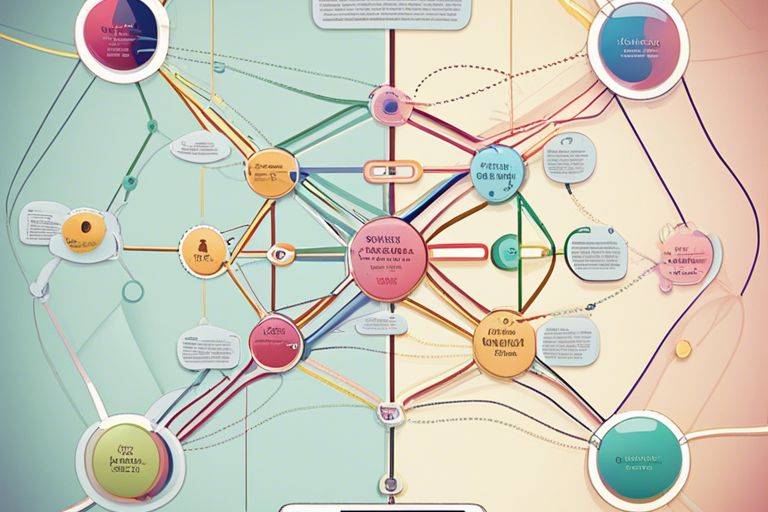
Most experts in the field of productivity and creativity swear by the powerful technique of mind mapping, popularized by Tony Buzan. Mind mapping is a method of visually organizing thoughts and ideas, allowing for clear representation of concepts and relationships in a creative and efficient manner. Through the use of colors, images, and branches, this technique helps individuals capture and structure their thoughts in a way that stimulates engagement and enhances memory.
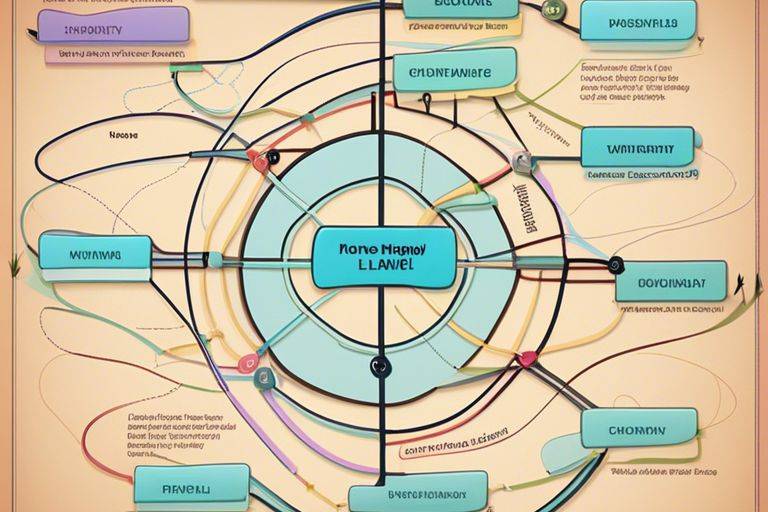
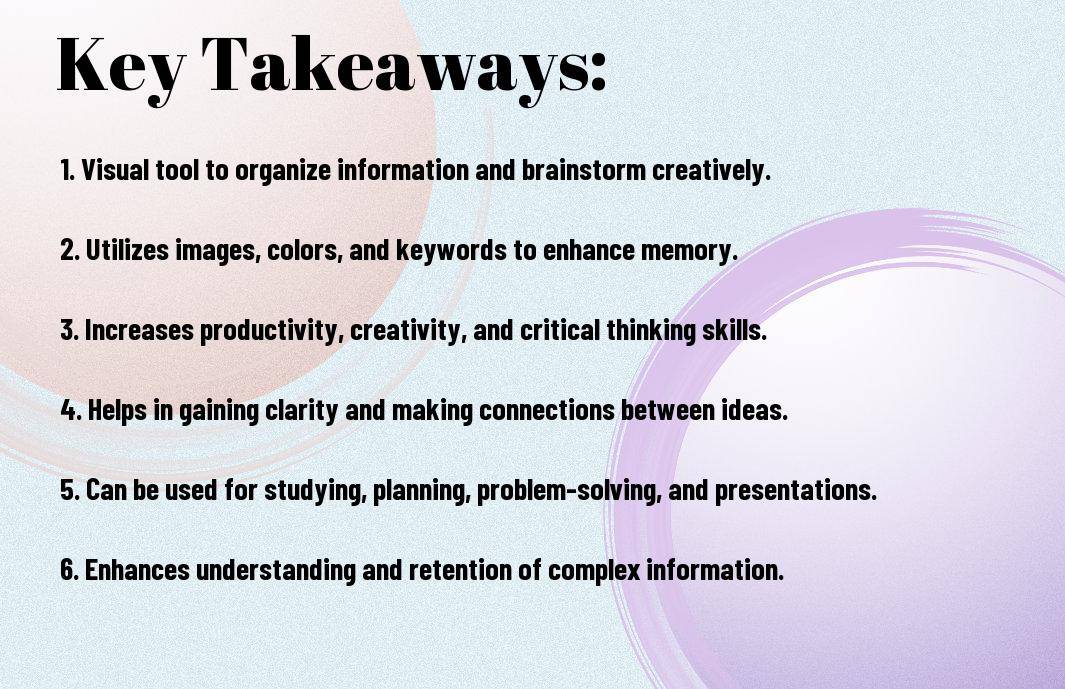
On a fundamental level, mind mapping is a visual representation of hierarchical information that helps individuals organize and understand complex ideas. It is a technique developed by Tony Buzan to improve learning, critical thinking, and creativity. The core concept involves creating a diagram that connects information around a central theme, using branches, colors, and images to represent different concepts and their relationships.
Some key concepts in mind mapping include non-linear thinking, which allows for flexibility and creativity in capturing ideas; association, where the connections between different pieces of information are emphasized; and visual organization, which leverages the brain’s preference for images and colors to enhance memory and understanding.
Traditional note-taking methods often involve linear, text-heavy formats that may limit comprehension and retention of information. On the other hand, mind mapping offers numerous advantages over traditional note-taking techniques. By utilizing a visual structure that mirrors the way the brain processes information, mind maps can enhance clarity, organization, and creativity in capturing and synthesizing thoughts.
Traditional note-taking primarily relies on written text, whereas mind mapping incorporates texts, images, and colors to represent ideas visually, stimulating different parts of the brain for enhanced memory and comprehension. The visual nature of mind maps makes them a powerful tool for brainstorming, planning, problem-solving, and presenting complex information in a more engaging and effective manner.
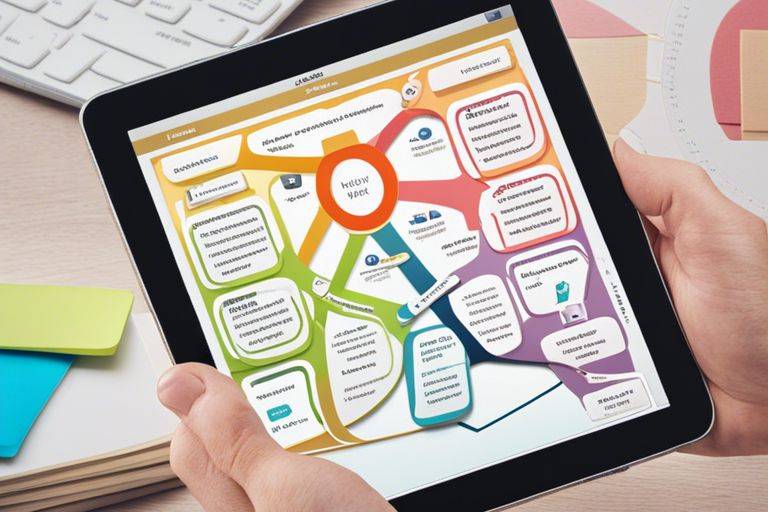
To understand the essence of mind mapping, one must research into the workings of the mind. Cognitive functions, such as memory, creativity, and organization, play a vital role. When we engage in the process of mind mapping, we are tapping into our brain’s natural inclination to organize information visually. This method allows us to better comprehend and retain information compared to traditional linear note-taking.
Mind mapping has been extensively studied and proven to be an effective tool for enhancing learning and information retention. Studies have shown that employing mind maps can lead to a significant increase in understanding, creativity, and critical thinking skills. Research supports the assertion that our brains are wired to respond well to visual stimuli, making mind mapping a powerful technique for improving cognitive processes.
In one study, participants who utilized mind maps were able to recall information more accurately and for a longer duration compared to those who used conventional note-taking methods. This evidence underscores the efficacy of mind mapping in optimizing learning and information processing.
To create a successful mind map, you need to understand the vital elements that make up this visual organization tool. The key components of a mind map include:
| Main Idea | The central concept or topic around which the entire mind map revolves. |
| Branches | Connect to the main idea and represent the main categories or themes. |
| Keywords | Concise words or phrases that summarize information within each branch. |
| Images | Visual representations that aid in memory retention and creative thinking. |
To construct a mind map effectively, follow these simple steps:
| Step 1 | Start by placing the main idea in the center of a blank page or digital canvas. |
| Step 2 | Create branches radiating out from the central idea to represent different key aspects or subtopics. |
| Step 3 | Add keywords or short phrases to each branch to capture vital information succinctly. |
| Step 4 | Incorporate images or symbols to enhance visual memory and stimulate creative thinking. |
With practice, you’ll become more adept at creating mind maps that synthesize complex information and stimulate innovative ideas.
All great minds love mind maps. They are a powerful tool in education and learning, aiding students in comprehending complex subjects and organizing thoughts effectively. By visually mapping out key points, relationships, and ideas, students can better understand and memorize information. Whether preparing for exams, writing essays, or brainstorming ideas, mind mapping enhances creativity and critical thinking skills. Educators can also use mind maps to plan lessons, present information in a structured manner, and engage students in interactive learning.
One of the most compelling applications of mind mapping is in business and professional development. Leaders and professionals use mind maps to brainstorm strategies, outline projects, and facilitate decision-making processes. Visualizing goals, tasks, and timelines can help teams stay organized, communicate ideas effectively, and boost productivity. Moreover, mind mapping software allows for real-time collaboration, enabling teams to work together seamlessly on projects regardless of physical location.
Business professionals can also utilize mind maps for presentations, business plans, and problem-solving, streamlining processes and fostering innovation within organizations.
Learning how to mind map can be a transformative experience for personal growth and self-improvement. Individuals can use mind maps to set goals, plan projects, and track progress in various aspects of their lives. Whether it’s organizing daily tasks, managing finances, or outlining career aspirations, mind mapping provides a visual roadmap for success. Mapping out personal development goals can increase motivation, clarify priorities, and boost overall well-being.
By using mind maps for self-reflection and decision-making, individuals can gain a deeper understanding of themselves, identify areas for improvement, and make informed choices to enhance their quality of life.
With the versatility and efficiency of mind mapping, individuals and professionals can unlock their full potential, enhance their productivity, and achieve greater success in various aspects of life.
Despite the myriad of tools and technologies available for organizing thoughts and ideas, Tony Buzan’s concept of mind mapping remains a powerful and effective method for visual thinking. By following Buzan’s rules for mind mapping, individuals can unlock their creativity and enhance their problem-solving skills.
The Laws of Mind Mapping according to Tony Buzan include key principles such as using an image as a central idea and connecting branches to represent different thoughts or concepts. Buzan emphasizes the use of colors, symbols, and images to stimulate the brain and enhance memory retention. By adhering to these laws, individuals can create mind maps that are not only visually engaging but also more memorable and impactful.
Buzan’s approach to optimizing mind maps for maximum effectiveness involves refining the structure of the map by organizing information in a hierarchical manner. By prioritizing key ideas and using keywords to summarize concepts, individuals can create mind maps that are concise and easy to comprehend. Additionally, Buzan suggests incorporating personal preferences and interests into mind maps to enhance engagement and motivation.
Tony Buzan’s techniques for mind mapping have revolutionized the way individuals organize and process information. By following his rules and optimizing mind maps for maximum effectiveness, individuals can tap into their full creative potential and boost their overall cognitive abilities.
Now, let’s probe into some advanced mind mapping techniques that can take your visual organization skills to the next level.
| With the advancements in technology, mind mapping has moved beyond pen and paper. Various software and online tools are available to create digital mind maps, offering features like collaboration, cloud storage, and interactive visuals. | There are several popular mind mapping software options like MindMeister, XMind, and MindNode that provide a range of functionalities to enhance your mapping experience. |
| Incorporating creativity in mind maps can unlock new possibilities. From using colors and imagery to integrating different shapes and structures, creative variations of mind maps can help stimulate the brain and enhance memory retention. | It is crucial to experiment with different styles and layouts to find the approach that best suits your thinking process and aids in organizing complex information effectively. |
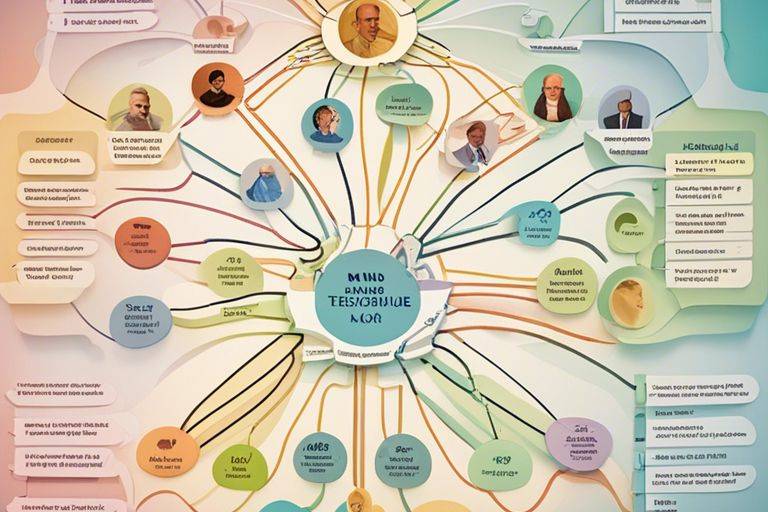
Not every mind mapping session will go smoothly. There are common challenges that may arise when creating mind maps, but with proper strategies in place, these obstacles can be overcome effectively.
Effective mind mapping requires a clear understanding of the topic and goals you want to achieve. Start by defining a central theme or idea and branch out from there. Use keywords and images to represent concepts and connections. Keep your mind map simple and organized, utilizing colors and shapes to differentiate between categories. Regularly review and revise your mind map to ensure it remains relevant and up-to-date.
Though mind mapping can be a creative and flexible tool, following these tips can enhance its effectiveness and help you achieve your objectives more efficiently.
Overcoming common issues in mind mapping requires patience and problem-solving skills. If you find yourself stuck or confused during the process, take a step back and reassess your approach. Are you focusing too much on details? Are you struggling to make connections between ideas? Identify the root cause of the issue and adjust your strategy accordingly.
Mapping out your thoughts and ideas visually can sometimes reveal underlying challenges or gaps in your understanding. By acknowledging and addressing these issues, you can refine your mind map and make it more effective in organizing your thoughts.
With this in mind, Tony Buzan’s invention of mind mapping has revolutionized the way we organize our thoughts and ideas visually. By understanding the brain’s natural thinking processes, Buzan created a powerful tool that enhances creativity, improves memory, and boosts productivity. Embracing mind mapping can lead to better learning, problem-solving, and communication skills, making it a valuable technique for students, professionals, and anyone looking to unleash their full mental potential.
For more details on Tony Buzan’s mind map talent and how he solved the problem of disorganized thoughts and ideas with his innovative approach, visit Mind Map Talent – How Tony Buzan Solved …
A: Mind mapping is a visual technique that helps organize information, thoughts, and ideas in a more structured and effective way.
A: Tony Buzan is a British author and educational consultant who is best known for popularizing the concept of mind mapping.
A: Mind mapping works by starting with a central idea or topic and branching out with related subtopics and key points, using lines, colors, and images to visually connect and organize the information.
A: Mind mapping can help improve creativity, memory, critical thinking, organization, and productivity by engaging both sides of the brain and making information easier to understand and recall.
A: To create a mind map, start by writing down a central idea or topic in the center of a blank page or canvas, then add branches for related subtopics, using keywords, colors, and images to enhance understanding and retention.
A: Yes, anyone can benefit from using mind mapping, regardless of age, profession, or background. It is a versatile and adaptable tool that can be used in various contexts, from education and business to personal development and creative projects.
A: There are many tools and software options available for creating mind maps, such as MindMeister, XMind, and Coggle. Choose the one that best suits your needs and preferences in terms of features, usability, and compatibility with your devices.
The One Thing – Gary Keller and Jay Papasan’s Focus on Making Everything Else Easier
Eisenhower Matrix – Dwight D. Eisenhower’s Strategy to Prioritize Tasks by Urgency and Importance
Visualization Techniques – Methods to Enhance Motivation and Clarity
Study Routines Transformed: Unleash Atomic Habits for Students to Boost Your Studies